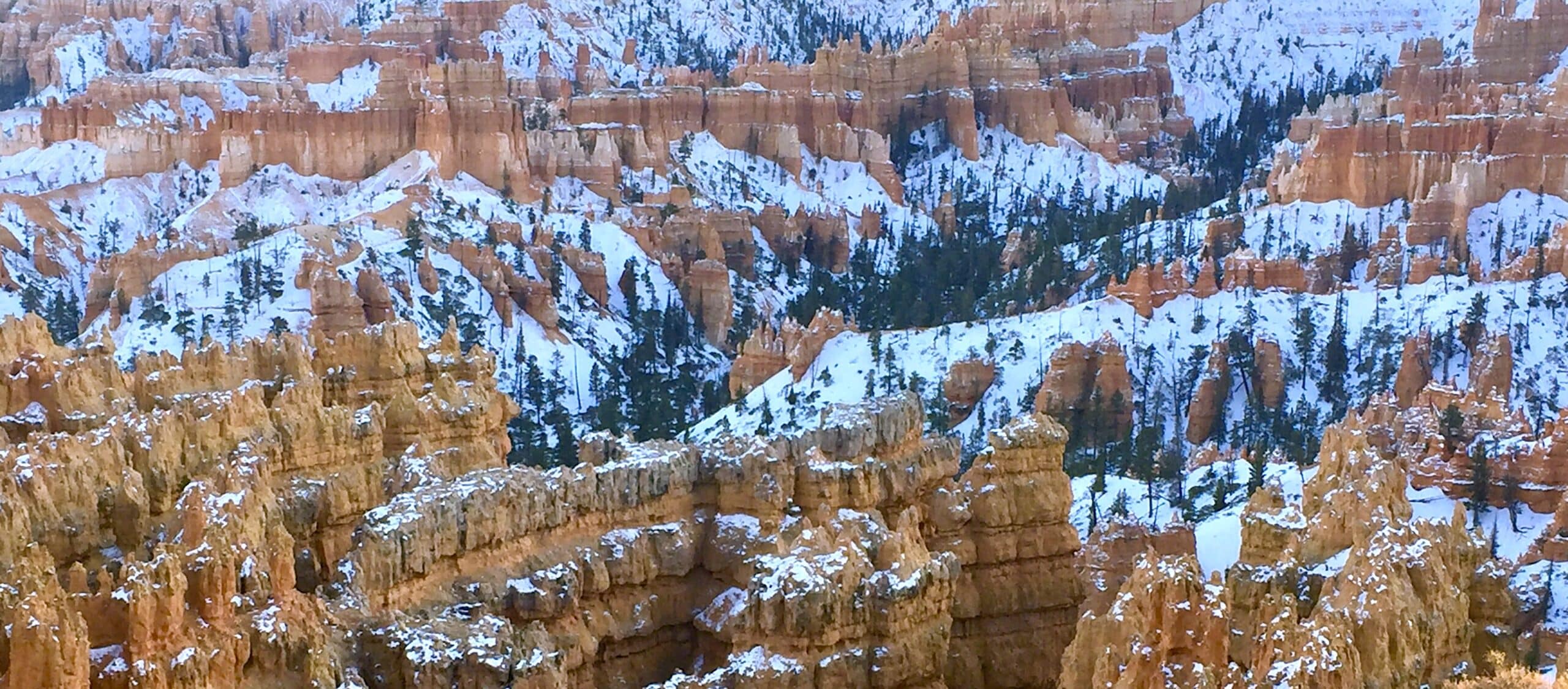Mesmerizing, otherworldly rock pillars in brilliant technicolor
Get ready for jaws agape in wondrous incredulity. The surreal geological formations at Bryce Canyon National Park (est. 1928) in Utah have been sculpted by erosion over millions of years. Evidence of human habitation dates back over 10,000 years. And today, it’s home to a rich variety of wildlife, including mule deer, pronghorn antelope, and more than 300 species of birds. Ranger-led programs about its geology, ecology, and human history — and their conservation efforts — are worth every minute.
Few things feel “unique” anymore, but Bryce’s towering hoodoos, narrow fins, kaleidoscopically colored rock formations, and natural bridges do! Hiking trails and car overlooks make it all quite accessible. If this park doesn’t instill a sense of stewardship for the environment, I’m not sure anything will.
The (pricey) gateway town of Bryce Canyon City isn’t anything to write home about, but it’s chock full of all the services you’ll need. The smaller town of Panguitch is about 30 minutes away. — Kim Grant

